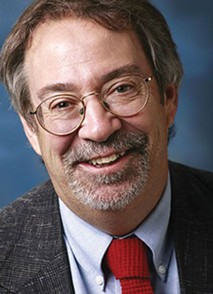On Sept. 1, 1979, Catherine Janet Walsh was found dead, lying face-down in her bed. Her hands were bound behind her back and a blue scarf was wrapped around her neck. Her death was ruled a homicide by strangulation. The responding officer, Andrew Gall, became committed to finding her killer.
With five suspects with equally strong motives, the case took Gall and the Monaca police 32 years to solve. When police re-opened it in 2010, and took DNA samples, they arrested Gregory Hopkins, with whom Walsh had a sexual relationship at the time of the murder. Hopkins was convicted.
Gall’s commitment attracted Steve Hallock, director of Point Park’s School of Communication’s graduate programs. The result is Hallock’s first true-crime book, Justice Delayed: The Catherine Janet Walsh Story (The Artist’s Orchard).
What draws people to true-crime stories?
Look at all the shows there are. Law & Order, CSI, Murder She Wrote. Violence and sex. In [Walsh’s] case, it’s stranger than fiction. I intentionally wrote it like a novel, because these detectives were living a mystery. What draws people is the mystery element: Why would somebody do this, and which of these five did it? … It’s a human drama.
But we never find out why Hopkins did it.
Gall’s theory is that it was kinky sex gone bad. There’s an interview at the end [of the book] where he said, “Had [Hopkins] just called the police and said, ‘We were involved in this strange sex, and it went bad and she died,’ he probably would have gotten manslaughter and maybe even given probation.” But he didn’t. So in the end, we have someone convicted of this crime, but this person maintains his innocence still today.
Do you think true-crime stories tend to be sensationalized?
I had a publisher interested in this book, and they said, “You’re going to have to include photos of the murder scene and the victim.” I told them no, and they said that they didn’t want to publish it. I think the temptation is there to sensationalize, and I had to be careful not to do that. I focused on character, the techniques, the science, the trial testimony and the investigation. The sex was part of it, you can’t avoid it, but my interest was more in telling a human drama and to study the human character involved here.


